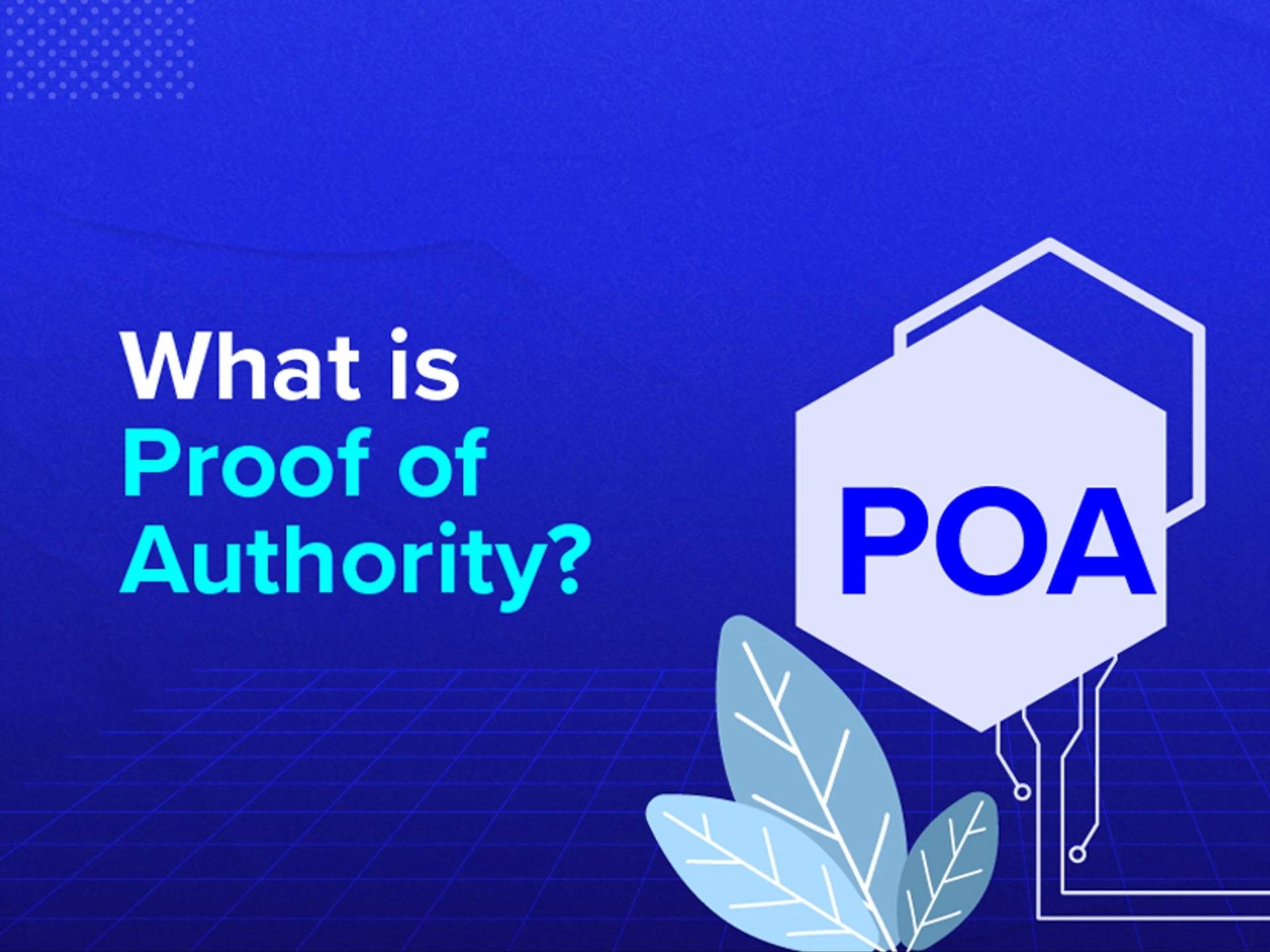Subscribe to wiki
Share wiki
Bookmark
Proof of Authority (PoA)
The Agent Tokenization Platform (ATP):Build autonomous agents with the Agent Development Kit (ADK)
Proof of Authority (PoA)
Proof of Authority (PoA) is a consensus system that allows only authorized entities to validate transactions in a blockchain network. PoA is an alternative consensus mechanism, that relies on known and reputable validators to produce blocks, and thus, provide computational power to a network. It enables relatively faster transactions using a Byzantine Fault Tolerance (BFT) algorithm with identity as a stake. [1][7]
Overview
The Proof-Of-Authority (PoA) is a consensus method where a group of validators is already chosen as the authority. Their task is to check and validate all the newly added identities, validate transactions, and blocks to add to the network. To ensure efficiency and security in the network the validator group is usually kept small (~25 or less). [2]
In proof-of-authority, machines earn the right to generate new blocks by passing a strict vetting process, which is discussed in detail in the next section. As a result, trustworthy validation machines protect PoA blockchains. These system moderators are preapproved participants who check blocks and transactions.[1]
Proof of Authority (PoA) is an enhanced version of Proof of Stake (PoS) where the validator’s identity is used as a stake in the network.[2]
A node needs to complete a mandatory process to authenticate itself to receive the right to generate new blocks. Validators need to register themselves in the public notary database using government-issued documents with the same identity that they have on the platform. Thus, Blocks and transactions are verified by participants, whose identity is already verified and acts as an authority of the system.[2]
With the power under a limited number of users, PoA consensus can be adopted as a solution for private networks rather than public blockchains.
History
PoA was proposed by a group of developers in March 2017 (coined by Gavin Wood) as a blockchain-based on the Ethereum protocol. It was developed with the idea to solve the problem of spam attacks on Ethereum’s Ropsten test network. The new network was named Kovan, the main test network that all Ethereum users use today.
Comparison of PoA to Other Algorithms
PoA is one of the numerous consensus algorithms in the blockchain space, and it contrasts with other popular algorithms such as PoW and PoS. PoW is the original consensus algorithm and requires miners to solve complex mathematical problems to create and validate blocks. It is secure and decentralized, but slow, costly, and wasteful. PoS is an alternative consensus algorithm which requires stakers to lock up tokens or coins to participate in the network. It is faster, cheaper, and greener than PoW, yet less secure and more prone to centralization. Proof of Burn(PoB) is a hybrid consensus algorithm that combines PoW and PoS to balance their trade-offs. It is more secure and decentralized than PoS, but more complex and less efficient than PoA.[6]
How Proof-of-Authority Works
Preapproved validators use software to organize transactions into blocks. The process is automated, and so the validators don't need to monitor their computers constantly. That, however, means that validators must keep their computers in good working order.
The essence of the reputation mechanism is trust in the validator's identity. It is a complex process to ensure weak candidates are weeded out. This guarantees that all validators follow the same procedure, ensuring the system's integrity and reliability.
Users who receive the right to become validators due to the PoA algorithm have an incentive to keep their rating high. Validators are motivated to maintain a stable transaction process to avoid tarnishing their reputation, which is tied to their real-life identity. As a result, most users value their hard-won role as a validator.[1]
Establishing Authority
The three main conditions that must be fulfilled for a validator to be established are: [5]
- Identity must be formally verified on-chain, with a possibility to cross-check the information in a publicly available domain.
- Eligibility must be difficult to obtain, to make the right to validate the blocks earned and valued. (Example: potential validators are required to obtain public notary license)
- There must be complete uniformity in the checks and procedures for establishing an authority.
Advantages
· High transaction rate.
· High-performance hardware is not required.
· PoA networks are very scalable as compare to PoW blockchains.
· Less power extensive.
· Low transaction fees.
· Sequentially block generation with fixed time interval by authorized network nodes. This increases transaction validity speed.
· No communication is required to reach the consensus between the nodes.
· Network operation is independent of the number of available genuine nodes.
· The chance of a node to become a forge depends upon both its stake and overall holding.
Drawbacks
· Based networks lack in decentralization.
· Validator’s identities are visible in the network.
· Does not guarantee censorship resistance.
Use Cases
- Testnet
PoA consensus is ideal for providing a control environment for testing features before launching them on the mainnet. Three of Ethereum’s testnets, namely Kovan, Goerli and Rinkeby, use Proof of Authority - private blockchains
PoA is best suited for enterprise-level networks like blockchain consortia and other private networks where some level of trust already exists among the members. - side chains
It is also a great option for a sidechain, a type of blockchain running parallel and connected to a parent blockchain via a two-way bridge. An example for this is the POA Network, a public sidechain on Ethereum that relies on pre-selected validators whose identities are public and verifiable.[4]
See something wrong?
The Agent Tokenization Platform (ATP):Build autonomous agents with the Agent Development Kit (ADK)
